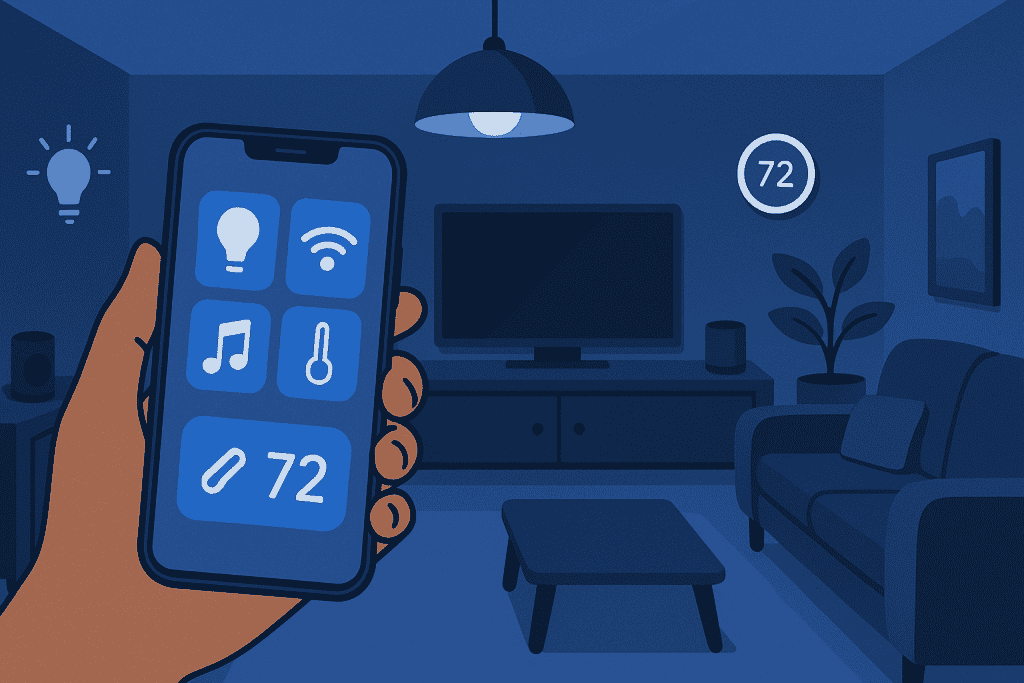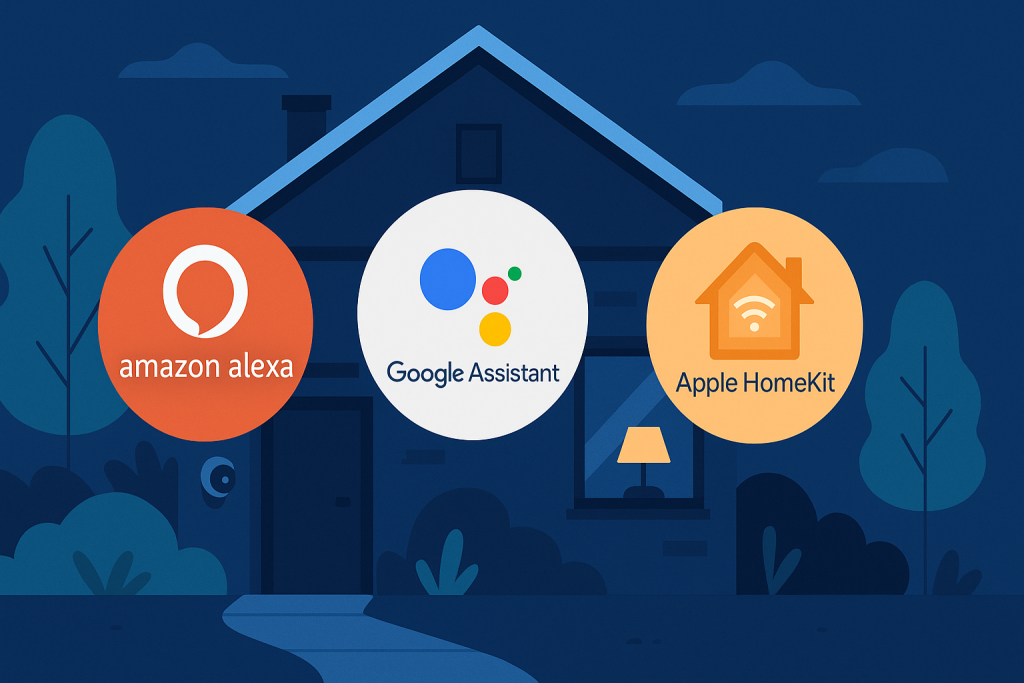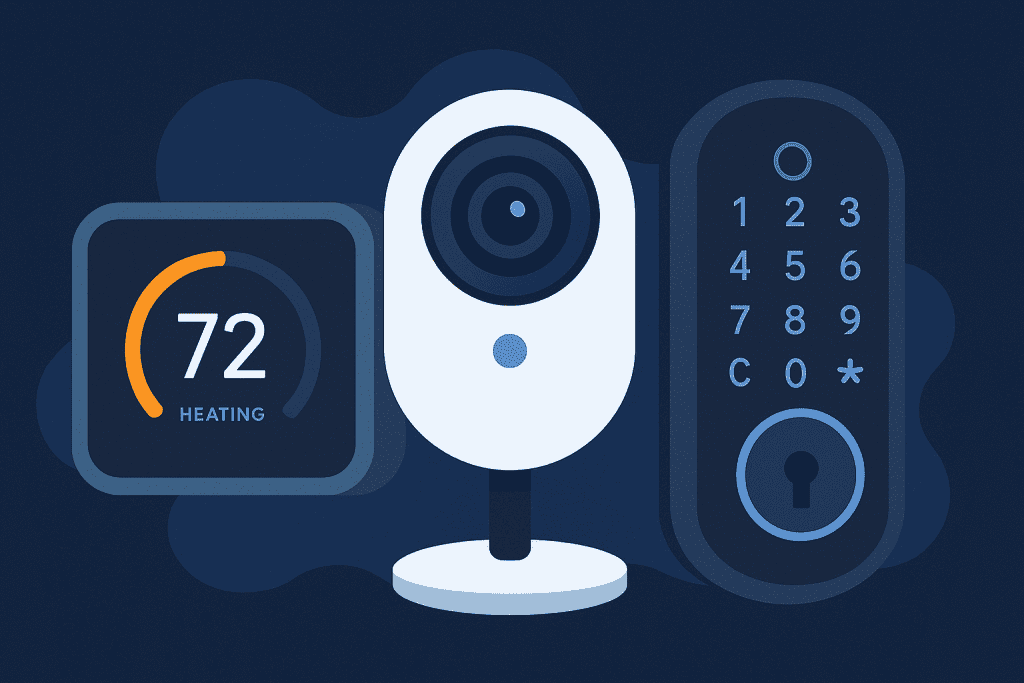
In 2025, smart homes have become a central part of modern living. More people are turning to smart devices powered by advanced technology to make daily tasks easier and more efficient. These tools are no longer seen as luxury items. They now offer real value in saving time, reducing energy costs, and improving home security. Whether you live in a small apartment or a large house, smart home systems can fit your needs and bring a touch of futuristic technology into your everyday routine.
Setting up a smart home might seem complex at first. But with the right tools and guidance, anyone can do it. This guide will walk you through every step, from choosing the right devices to setting up your home automation. You will learn how to start small and grow your system over time. If you’re ready to bring more convenience and control into your life, this smart home guide is the perfect place to begin.
Materials or Tools Needed
Before embarking on your smart home journey, ensure you have the following essentials:
- Reliable Wi-Fi Connection: A stable internet connection is crucial for seamless communication between devices.
- Smartphone or Tablet: These devices serve as the primary control centers for your smart home.
- Smart Home Hub: Devices like Amazon Echo or Google Nest centralize control of various smart devices.
- Compatible Smart Devices: This includes smart bulbs, plugs, thermostats, and security cameras.
| Item | Purpose |
|---|---|
| Wi-Fi Router | Connects all smart devices |
| Smartphone/Tablet | Controls and configures devices |
| Smart Home Hub | Centralizes device management |
| Smart Devices | Automates home functions |
Step-by-Step Instructions
1. Choose Your Smart Home Ecosystem

Begin by selecting a smart home ecosystem that aligns with your preferences. Popular options include Amazon Alexa, Google Assistant, and Apple HomeKit. Your choice will influence device compatibility and control methods.
2. Set Up Your Smart Home Hub
Unbox your chosen smart home hub and place it in a central location within your home. Connect it to your Wi-Fi network and link it to your smartphone or tablet using the manufacturer’s app. This hub will serve as the command center for your smart devices.
3. Install Smart Devices
Start with basic devices like smart bulbs and plugs. Replace traditional bulbs with smart ones and plug appliances into smart plugs. Use the corresponding apps to connect these devices to your hub. Ensure each device is functioning correctly before proceeding.
4. Configure Device Settings
Customize each device’s settings through the app. Set schedules, adjust brightness levels, and rename devices for easy identification. Tailoring these settings enhances the efficiency and personalization of your smart home.
5. Create Automation Routines
Enhance convenience by setting up automation routines. For example, program your lights to turn on at sunset or your thermostat to adjust temperatures when you leave home. These routines streamline daily tasks and improve energy efficiency.
6. Expand Your Smart Home

Once comfortable, consider adding more devices like smart thermostats, security cameras, and door locks to further automate your home. Each addition should be compatible with your chosen ecosystem to maintain seamless integration.
Smart Home Use Cases and Benefits
Smart home technology brings many practical benefits to everyday life. One of the most common advantages is energy efficiency. Devices like smart thermostats and automated lighting help reduce electricity use by adjusting to your daily routine. You can set lights to turn off when no one is in the room or schedule your thermostat to lower the temperature while you are away.
Security is another strong benefit. Smart locks, doorbell cameras, and motion detectors allow you to monitor and protect your home remotely. You can check who is at your door or receive alerts if unusual activity is detected.
Convenience also plays a key role. Voice assistants can control devices, answer questions, or even create reminders. With a single command, you can turn off all lights or play your favorite playlist.
Smart homes also improve accessibility. People with mobility challenges can control appliances, lights, and doors without needing to move around. This added control helps create a more comfortable and supportive environment.
By using smart devices in these ways, homeowners can enjoy a safer, more efficient, and more convenient lifestyle.
Tips and Warnings
Tips
| Tip | Description |
|---|---|
| Start Small | Begin with a few devices to familiarize yourself with the setup process. |
| Check Compatibility | Ensure new devices are compatible with your chosen ecosystem. |
| Regular Updates | Keep device firmware updated for security and performance improvements. |
Warnings
- Avoid Overloading Wi-Fi: Too many devices can strain your network; consider upgrading if necessary.
- Optimal Placement: Place devices where they can maintain strong connections to the hub.
- Follow Manufacturer Guidelines: Adhere to setup instructions to prevent malfunctions.
Conclusion
Creating a smart home in 2025 is not just about adding new gadgets. It’s about building a home that works for you. When done correctly, a smart home can save you time, cut down on energy use, and give you more peace of mind. You do not need to be a tech expert to get started. You only need the right tools, a clear plan, and a bit of patience.
Start small and let your system grow with your lifestyle. As you become more comfortable, you can add new features and devices. Each step you take brings more value and comfort into your home. Take control of your living space with smart technology and enjoy the simplicity it offers every day.
FAQ
What is the best smart home ecosystem for beginners?
For beginners, Amazon Alexa and Google Assistant are user-friendly and support a wide range of devices. They offer intuitive apps and extensive community support, making the setup process straightforward.
Can I integrate smart home devices from different brands?
Yes, many smart home devices are designed to be compatible across various ecosystems. However, it’s essential to check compatibility before purchasing to ensure seamless integration.
How secure are smart home devices?
Smart home devices are generally secure, especially when you follow best practices like using strong passwords, enabling two-factor authentication, and keeping firmware updated. Always purchase devices from reputable manufacturers.
Resources
- Eufy: How to Make a Smart Home in 2025
- TechThirsty: Smart Home Guide 2025
- MyNetHome: How to Set Up a Smart Home from Scratch 2025
- Reolink: How to Make a Smart Home
- Eufy Blog: Smart Home Guide
